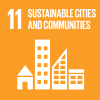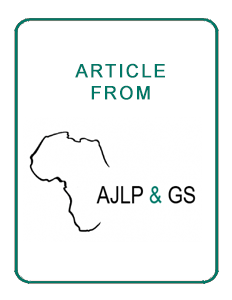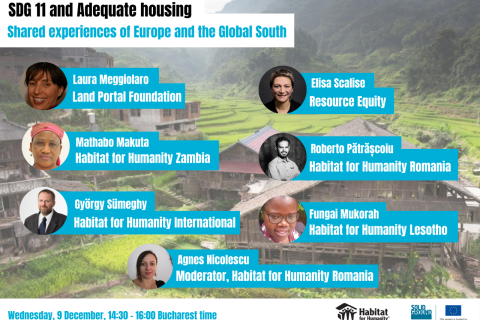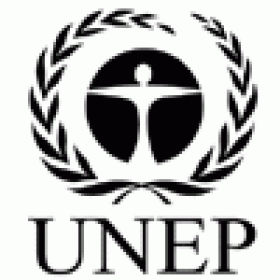
Proportion of urban population living in slums, informal settlements or inadequate housing
Last updated on 1 February 2022
This indicator is currently classified as Tier I. The United Nations Human Settlements Programme (UN-Habitat) is the Custodian agency for this indicator.
Unit of measure: The indicator is unitless, expressing a ratio between the number of people living in households who do not meet one or more of the basic housing conditions and the total population (%), Ratio between the number of households with net monthly expenditure on housing exceeding 30% of the total monthly income and the total population (%), Ratio between the number of households with approved municipal permits and the total population (%)
Why is this indicator important?
Urbanization is one of the most significant global trends of the 21st century. Rapid urbanization without proper planning and governance mechanisms, can lead to tenure insecurity, spatial inequalities and a lack of basic service provision. Expanding slums and precarious informal settlements may increase poverty, pollution, health, and environmental risks. At the same time, displacement for urban development can lead to food insecurity, loss of community structures, and the marginalization of certain segments of the population.
It is thus essential to collect data on the proportion of the population living in slums, informal settlements or those living in inadequate housing so that appropriate policies for addressing housing issues can be developed ensuring no one is left behind.
How is the indicator measured and monitored?
According to the metadata document, people living in informal settlements or slums, do not meet one or more of the five following housing conditions: (1) access to improved water; (2) access to improved sanitation facilities; (3) sufficient-living area (not overcrowded); (4) durable housing; (5) and security of tenure. In addition, the indicator considers whether households have an approved municipal permit as well as their affordability to measure inadequate housing. Most data is derived from censuses and household surveys. In addition, UN-Habitat reports annually on related data in the MDG’s reports. In 2021, the Global Housing Indicators Working Groups suggested to coordinate the worldwide data collection on this indicator.
As of now, indicator measurement covers 320 cities as part of the UN-Habitat City Prosperity Initiative. The data is disaggregated by location, income-group, sex/ethnicity/religion/migration status (head of household), age, and disability status. Planning has already begun for regional and global disaggregation. The major limitations lie with the lack of capacities at national and city levels to assess and monitor all indicator components. Moreover, the indicator does not consider homelessness.
By Anne Hennings, peer-reviewed by Dennis Mwaniki, Spatial Data Expert at UN-Habitat’s Data and Analytics Unit.
Official indicator data
The criteria defining slums, informal settlements and inadequate housing include access to water, access to sanitation, sufficient living area, overcrowding, structural quality, durability and location, security of tenure, affordability, accessibility, and cultural adequacy. * Select "year" below to see the most recent data for more countries.
Other related indicators on the Land Portal
In addition to the official indicator data, the following indicators provide information concerning urban land administration, access to feasible and affordable formalization, and efforts to improve informal settlements.
| Indicator | Min-Max Number of years |
Countries / Obs | Min / Max Value |
|---|---|---|---|
| Formalization of urban residential housing is feasible and affordable | |||
| Individual land in urban areas is (i) recorded and (ii) mapped | |||
| Process to improve informal settlements exists | |||
| Urban Population |
Institutional Overlap and Power Relations in Private-Led Regularization Projects in Informal Settlements: The case of Gairo Town, Morogoro
In the early 1990s to date, the private sector has continued to gain momentum in urban planning and service delivery. Among others, the penetration of neo-liberal ideology in policies and legislations empowered the engagement of private sector in urban planning domain.
Quality of life in a “high-rise lawless slum”: A study of the “Kowloon Walled City”
Informed by the ‘quality of life’ model with specific reference to Chinese culture, this article uses reliable and publicly available information seldom used in historical or heritage study to identify the designs of flats and builders of the “Kowloon Walled City” (hereafter the City) and reliable oral testimonies to refute some myths about the quality of life within it.
Metadata on SDG Indicator 11.1.1
The housing sector including its institutions, laws and regulations, touches every single aspect of the economy of a country and has interface with practically every social development sector. People living in adequate homes have better health, higher chances to improve their human capital and seize the opportunities available in urban contexts.
UN-Habitat SDG 11.1 Adequate Housing
As we turn the page on MDGs to SDGs, the unprecedented proliferation of slums and informal settlements, and a chronic lack of adequate housing, continues to be amongst the major challenges of urbanization. Slums, informal settlements and inadequate housing remain the visible manifestations of poverty and inequality in cities.
I used to live there
As of 2017, the City of Cape Town offers little support to residents who will become homeless because of eviction, except a one way ticket to a relocation camp on the periphery of the city. Good law led to a clear obligation to provide temporary emergency accommodation but was very poorly implemented.
Нумерация страниц
7.5 billion and counting: How many humans can the Earth support?
Humans are the most populous large mammal on Earth today, and probably in all of geological history. This World Population Day, humans number in the vicinity of 7.5 to 7.6 billion individuals.
Upgrade slums, expand rentals to ease urban housing crisis - researchers
"We think it's a crisis when one-in-three households - one-in-three citizens that live in cities - don't have adequate, secure or affordable housing"
TEPIC, Mexico, July 12 (Thomson Reuters Foundation) - Booming cities in developing nations should upgrade slums, build on underused land and promote rental choice to tackle a fast-growing crisis caused by a shortage of affordable housing, researchers said on Wednesday.
A New Response to Informal Settlements
Government should address informal settlement housing backlog in the country. Addressing challenges posed by informal settlements will help government to meet the United Nations Millennium Development Goals such as providing access to basic water and sanitation. Underlying socio-economic causes of informal settlements should be tackled. When addressing challenges posed by informal settlements, government should provide the urban poor with cost effective access to urban environments.
Нумерация страниц
![]()

By 2030, ensure access for all to adequate, safe and affordable housing and basic services and upgrade slums
Indicator details
The Indicator is conceptually clear, has an internationally established and available methodology and standards, and that data is regularly produced by countries for at least 50 per cent of countries and of the population in every region where the indicator is relevant.
Key dates:









